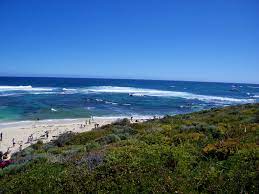On average, Devon and Somerset Fire and Rescue Service attends 35 water rescue incidents every year from rivers, lakes and reservoirs.
As part of the national ‘Be Water Aware’ week April 25 – May 1 2022, Devon and Somerset Fire and Rescue Service is holding a week of action, highlighting the risks and offering safety advice to help locals and visitors to our two counties to stay safe around water.
Nationally, around half of people who drown had no intention of being in water – they may have been walking, running, or have jumped in the water after their dog. According to the latest national data*, 50% more people drowned after they ended up in the water when running or walking (63 deaths in 2020) than those who drowned when swimming (41 deaths in 2020).
There is also an increased likelihood of drowning after drinking alcohol or taking drugs. Nationally more than one in four accidental water fatalities were reported with a known presence of alcohol and/or drugs (49 out of 176 fatalities).
Ros Clarke, Group Manager for Prevention at Devon and Somerset Fire and Rescue Service said:
“In Devon and Somerset we have one of the largest areas of water in the country along with one of the highest rates of drowning incidents, so we need to keep putting water safety as a priority.
“We hope our week of action for ‘Be Water Aware’ will raise awareness of the simple steps people can take to reduce their risks around water, and help everyone to stay safe.
“We particularly want people to take care when socialising around water. Alcohol and water are a deadly combination – you can think you’re invincible, but currents are often strong and the water is cold. Please encourage your friends to take a route home avoiding water after a night out.”
If someone falls into the water near you, follow this advice: never go into the water to try to save someone, call 999 immediately, if you’re near the coast, ask for the coastguard. If you are inland, ask for the fire, and ambulance services, let emergency services know where you are, use location services on your phone if possible, downloading the What3Words app can help pinpoint your location, if you don’t have a phone or can’t access location tools, look for any landmarks or signs that could help services find you, if the person can swim, shout “swim to me!, the water can be disorientating, but this could help give them a focus. Keep instructions loud, clear and consistent, look for lifesaving equipment. There might be lifebelts or throw bags you can use, if there isn’t any lifesaving equipment you can use, look for other things that could help them stay afloat, such as a ball. You can even use a scarf or long stick to help pull someone in. If you do this, lie on the ground so your entire body is safely on the edge and reach out with your arm. Don’t stand up or lean over the water, as you might get pulled in.
If you manage to get someone out of the water, they will need medical attention. Even if they seem fine, drowning can occur at a later stage if water has already entered the lungs. It can cause death up to 48 hours after the near-drowning incident. If the person is unconscious, check they are breathing. If they are not breathing, they need five rescue breaths and then CPR (30 chest compressions followed by two rescue breaths). Continue until help arrives.
If the person is unconscious but breathing, put them in the recovery position with their head lower than their body.
Dos added: “We particularly want people to take care when socialising around water. Alcohol and water are a deadly combination – you can think you’re invincible, but currents are often strong and the water is cold. Please encourage your friends to take a route home avoiding water after a night out.”




